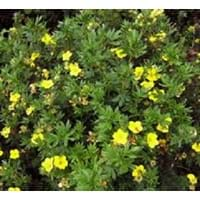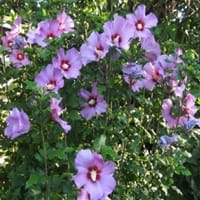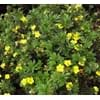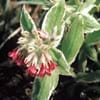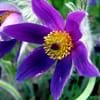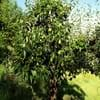Life Span
Perennial
Perennial
Origin
Not Available
Australia
Types
Abbottswood Potentilla
Day Dawn Potentilla
Goldfinger Potentilla
Pink Beauty Potentilla
Snowbird Potentilla
Not available
Number of Varieties
Not Available
Habitat
gardens, Grassland, Homesteads, Open areas
subtropical regions, Temperate Regions, Tropical regions, Warmer regions
USDA Hardiness Zone
3-8
9-11
Sunset Zone
A1, A2, A3, H1, H2, 1a, 1b, 2a, 2b, 3a, 3b, 4, 5, 6, 7, 8, 9, 10, 11, 12, 13, 14, 15, 16, 17, 18, 19, 20, 21, 22, 23, 24
H1, H2, 13, 14, 15, 16, 17, 20, 21, 22, 23, 24
Habit
Not Available
Upright/Erect
Minimum Height
Not Available
Minimum Width
Not Available
Flower Color
Not Available
Blue, Purple, Blue Violet
Flower Color Modifier
Not Available
Not Available
Fruit Color
Not Available
Not Available
Leaf Color in Spring
Not Available
Dark Green
Leaf Color in Summer
Not Available
Dark Green
Leaf Color in Fall
Not Available
Dark Green
Leaf Color in Winter
Light Green
Dark Green
Leaf Shape
Tiny
Irregular
Plant Season
Not Available
Spring, Summer, Fall, Winter
Sunlight
Full Sun, Partial Sun
Full Sun
Growth Rate
Not Available
Medium
Type of Soil
Not Available
Clay, Loam, Sand
The pH of Soil
Not Available
Acidic, Neutral, Alkaline
Soil Drainage
Not Available
Well drained
Bloom Time
Summer, Late Summer, Early Fall
Indeterminate
Repeat Bloomer
Not Available
Yes
Tolerances
Drought
Not Available
Where to Plant?
Ground, Pot
Ground, Pot
How to Plant?
Stem Planting
Seedlings, Semi-hardwood cuttings
Plant Maintenance
Medium
Medium
Watering Requirements
Water Deeply, Water when soil is dry
Average Water Needs, Do Not over Water, Requires regular watering
In Summer
Lots of watering
Lots of watering
In Spring
Moderate
Moderate
In Winter
Average Water
Average Water
Soil pH
Not Available
Acidic, Neutral, Alkaline
Soil Type
Not Available
Clay, Loam, Sand
Soil Drainage Capacity
Not Available
Well drained
Sun Exposure
Full Sun, Partial Sun
Full Sun
Pruning
Prune if you want to improve plant shape, Prune in winter, Prune to control growth, Remove damaged leaves, Remove deadheads, Requires little pruning
Remove damaged leaves, Remove dead branches, Remove dead leaves
Fertilizers
All-Purpose Liquid Fertilizer
All-Purpose Liquid Fertilizer
Pests and Diseases
Red blotch
Red blotch, Rust aphids
Plant Tolerance
Drought
Not Available
Flowers
Not Available
Yes
Flower Petal Number
Not Available
Single
Showy Fruit
Not Available
No
Edible Fruit
Not Available
No
Fragrant Flower
Not Available
No
Fragrant Fruit
Not Available
No
Fragrant Leaf
Not Available
No
Fragrant Bark/Stem
Not Available
No
Showy Foliage
Not Available
Yes
Showy Bark
Not Available
No
Foliage Texture
Not Available
Medium
Foliage Sheen
Not Available
Matte
Invasive
Not Available
No
Self-Sowing
Not Available
Yes
Attracts
Not Available
Butterflies, Flying insects, Hummingbirds, Insects
Allergy
Not Available
Not Available
Aesthetic Uses
Showy Purposes
Borders, Showy Purposes, small hedge
Beauty Benefits
Not Available
Not Available
Environmental Uses
Air purification
Air purification
Medicinal Uses
Curing infectious diseases, Improve heart health, Lung Problems, Treatment of ulcers
High blood pressure, lowering blood pressure
Part of Plant Used
Not Available
Flowers, Leaves
Other Uses
Showy Purposes
Decoration Purposes
Used As Indoor Plant
Yes
Yes
Used As Outdoor Plant
Yes
Yes
Garden Design
Not Available
Container, Feature Plant, Hedges, Mixed Border, Rock Garden, Wall
Botanical Name
POTENTILLA cinerea
ALYOGYNE huegelii 'Monle'
Common Name
Abbotswood Potentilla
Blue Hibiscus, Purple Delight Blue Hibiscus
In Hindi
Potentilla Abbotswood
Blue Hibiscus
In German
Abbotswood potentilla
Blauer Hibiskus Baum
In French
Abbotswood potentille
Bleu Hibiscus Arbre
In Spanish
Abbotswood Potentilla
Azul árbol del hibisco
In Greek
Abbotswood Potentilla
Μπλε Hibiscus Tree
In Portuguese
Abbotswood Potentilla
Árvore azul do hibiscus
In Polish
Abbotswood Potentilla
Niebieski Hibiscus Drzewo
In Latin
Abbotswood Potentilla
Hibiscus lignum blue
Phylum
Not Available
Magnoliophyta
Class
Not Available
Magnoliopsida
Family
Rosaceae
Malvaceae
Genus
Potentilla
Alyogyne
Clade
Angiosperms, Eudicots, Rosids
Angiosperms, Eudicots, Rosids
Tribe
Not Available
Hibisceae
Subfamily
Rosoideae
Malvoideae
Number of Species
Not Available
Importance of Abbotswood Potentilla and Blue Hibiscus
Want to have the most appropriate plant for your garden? You might want to know the importance of Abbotswood Potentilla and Blue Hibiscus. Basically, these two plants vary in many aspects. Compare Abbotswood Potentilla and Blue Hibiscus as they differ in many characteristics such as their life, care, benefits, facts, etc. Every gardener must at least have the slightest clue about the plants he wants to plant in his garden. Compare their benefits, which differ in many ways like facts and uses. The medicinal use of Abbotswood Potentilla is Curing infectious diseases, Improve heart health, Lung Problems and Treatment of ulcers whereas of Blue Hibiscus is High blood pressure and lowering blood pressure. Abbotswood Potentilla has beauty benefits as follows: Not Available while Blue Hibiscus has beauty benefits as follows: Not Available.
Compare Facts of Abbotswood Potentilla vs Blue Hibiscus
How to choose the best garden plant for your garden depending upon its facts? Here garden plant comparison will help you to solve this query. Compare the facts of Abbotswood Potentilla vs Blue Hibiscus and know which one to choose. As garden plants have benefits and other uses, allergy is also a major drawback of plants for some people. Allergic reactions of Abbotswood Potentilla are Not Available whereas of Blue Hibiscus have Not Available respectively. Having a fruit bearing plant in your garden can be a plus point of your garden. Abbotswood Potentilla has no showy fruits and Blue Hibiscus has no showy fruits. Also Abbotswood Potentilla is not flowering and Blue Hibiscus is flowering. You can compare Abbotswood Potentilla and Blue Hibiscus facts and facts of other plants too.
